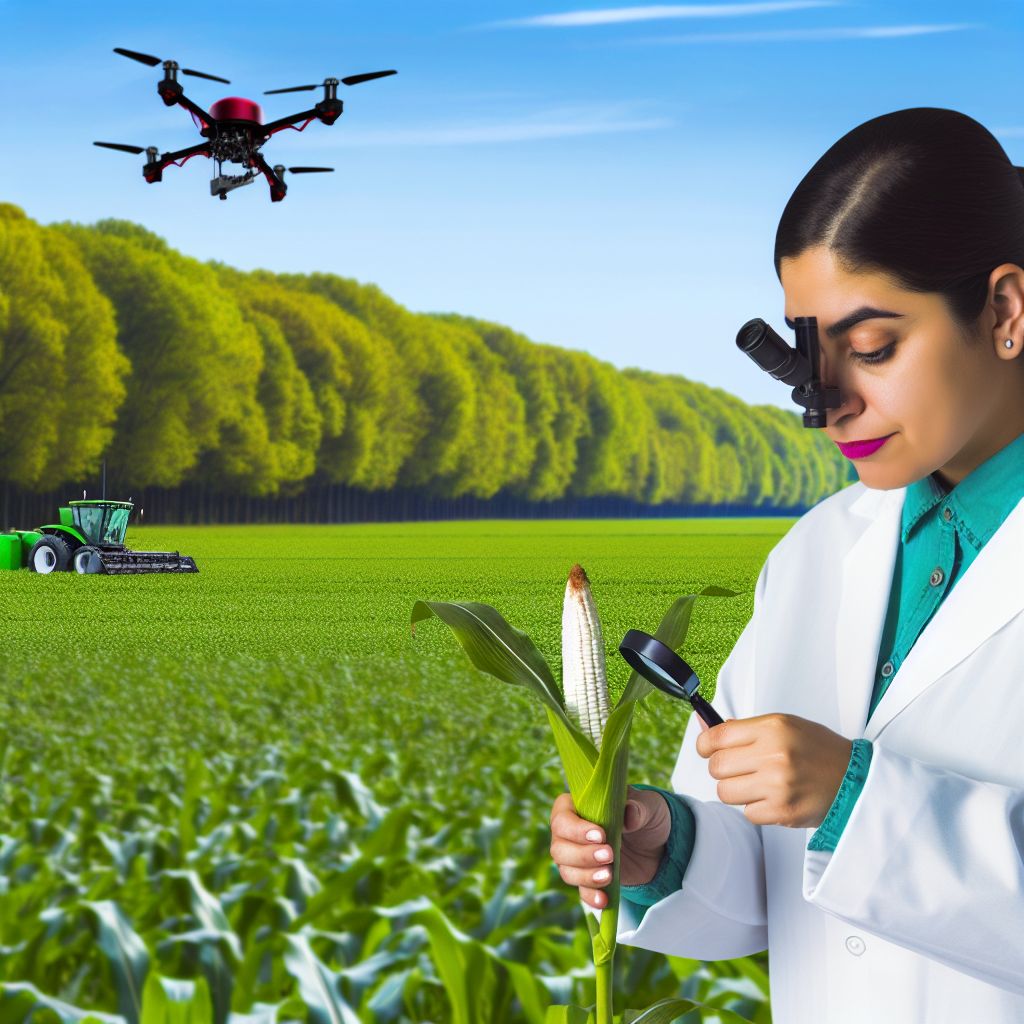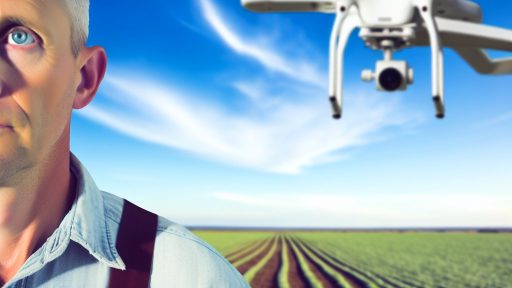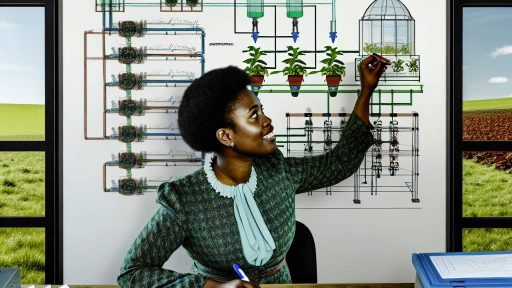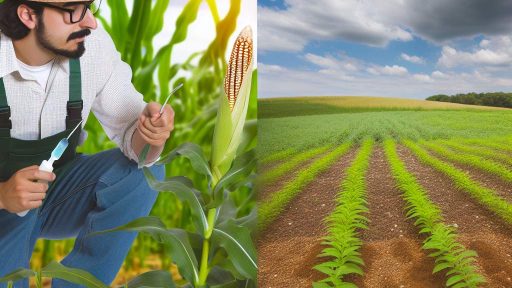Introduction to Controlled Environment Agriculture
Understanding Controlled Environment Agriculture
Controlled Environment Agriculture (CEA) is a method of growing plants indoors.
This technique allows precision in controlling environmental conditions.
Factors such as temperature, light, and humidity are meticulously regulated.
As a result, plants can thrive beyond typical outdoor limits.
Importance of CEA in Maximizing Crop Yields
Maximizing crop yields is a primary goal of modern agriculture.
CEA significantly enhances productivity by creating ideal growing conditions.
It reduces the impact of pests and diseases on crops.
Additionally, CEA can facilitate year-round production, boosting supply.
Farmers can make more informed decisions based on real-time data.
Benefits of CEA
CEA provides several advantages over traditional farming methods.
- Consistent product quality is a notable benefit.
- Water usage is minimized, promoting sustainability.
- Pesticide use is often reduced, leading to healthier crops.
- Space utilization is optimized, allowing for higher outputs.
Technologies Driving CEA
Innovative technologies underpin the effectiveness of CEA.
Hydroponics is a popular method for growing without soil.
Aeroponics offers increased oxygen supply to roots, enhancing growth.
LED lighting systems provide energy-efficient light tailored for crops.
Automation technologies streamline operations, minimizing labor costs.
Transform Your Agribusiness
Unlock your farm's potential with expert advice tailored to your needs. Get actionable steps that drive real results.
Get StartedCase Studies of Successful CEA Implementation
Many companies have adopted CEA, reaping significant benefits.
GreenSky Farms, for example, has increased yield by 30% using CEA.
Vertical Harvest in Jackson, Wyoming, grows produce in limited space.
Such case studies illustrate the potential of CEA in diverse environments.
Challenges and Future of CEA
Despite its advantages, CEA faces some challenges.
Initial setup costs can be high, deterring some farmers.
Additionally, technical expertise is crucial for successful operations.
However, the future of CEA looks promising with ongoing innovations.
As technology advances, CEA will likely become even more accessible.
Key Components of Controlled Environment Agriculture
Climate Control
Climate control is vital for optimal crop growth.
It involves managing temperature, humidity, and airflow.
By maintaining ideal conditions, producers enhance yields significantly.
Moreover, advanced sensors can monitor and adjust the environment.
This technology allows for real-time data analysis and adjustments.
As a result, crops thrive under the best possible conditions.
Lighting
Lighting plays a crucial role in controlled environment agriculture.
Artificial lighting systems simulate natural sunlight.
This ensures plants receive adequate light regardless of external conditions.
Furthermore, different light spectrums can influence plant growth stages.
For instance, blue light encourages vegetative growth.
On the other hand, red light promotes flowering and fruiting.
Irrigation Systems
Irrigation systems are essential for precise water management.
Soil moisture sensors help determine when to irrigate plants.
This reduces water waste and improves efficiency.
Showcase Your Farming Business
Publish your professional farming services profile on our blog for a one-time fee of $200 and reach a dedicated audience of farmers and agribusiness owners.
Publish Your ProfileDrip irrigation systems deliver water directly to the root zone.
Consequently, plants receive the right amount of water.
This approach maximizes nutrient uptake and overall health.
Soil vs. Hydroponics: Evaluating the Best Growing Mediums for Crop Yield Maximization in CEA
Understanding Soil as a Growing Medium
Soil has been the traditional growing medium for agriculture for centuries.
It supports plants by providing essential nutrients and minerals.
Additionally, soil helps retain water, which is vital for plant health.
Soil also fosters beneficial microorganisms that enhance plant growth.
However, soil quality can vary greatly, impacting crop yields.
Farmers must regularly test and amend soil to optimize fertility.
Moreover, soil can be susceptible to erosion and nutrient depletion.
Hydroponics: An Innovative Approach
Hydroponics utilizes nutrient-rich water solutions instead of soil.
This method allows for precise control over nutrient delivery.
Consequently, plants can grow faster and produce higher yields.
Hydroponic systems reduce the risk of soil-born diseases.
Additionally, they require less water compared to traditional farming.
However, setting up a hydroponic system can be costly and complex.
Growers must also be vigilant about pH and nutrient levels.
Comparing Yield Potential
The yield potential varies significantly between soil and hydroponics.
In many cases, hydroponic systems can outpace soil-based farming.
For instance, leafy greens often thrive in hydroponic settings.
Conversely, some root vegetables may perform better in soil.
Ultimately, the choice depends on the type of crops being cultivated.
Considerations for Choosing a Growing Medium
Several factors influence the decision between soil and hydroponics.
- Budget: Hydroponics can demand higher initial investments.
- Crop Type: Certain plants naturally prefer specific mediums.
- Space: Hydroponics often requires less physical space.
- Environmental Control: Hydroponics provides better climate control.
- Labor: Soil farming may require more manual labor for maintenance.
Future Trends in Crop Production
The future of crop production will likely see increased reliance on hydroponics.
This shift aligns with urbanization and the need for sustainable practices.
However, soil health remains critical for long-term agriculture.
Integrating both methods may provide optimal solutions for growers.
Innovative technologies will continue to enhance both systems.
Discover More: Streamlining Agricultural Payments Using Blockchain Technology
The Role of Technology in Controlled Environment Agriculture
Embracing Automation for Efficiency
Automation plays a critical role in controlled environment agriculture (CEA).
It streamlines various agricultural processes.
Furthermore, automation reduces labor costs and human error.
Advanced automated systems can monitor crop conditions continuously.
This ensures optimal growth conditions for each plant.
Incorporating Sensors for Precision
Sensors are essential tools in CEA.
They provide real-time data on environmental variables.
Temperature, humidity, and light levels are commonly monitored.
Moreover, soil moisture sensors help manage irrigation effectively.
This technology allows farmers to respond promptly to changing conditions.
Utilizing Data Analytics for Decision Making
Data analytics is revolutionizing crop management strategies.
Showcase Your Farming Business
Publish your professional farming services profile on our blog for a one-time fee of $200 and reach a dedicated audience of farmers and agribusiness owners.
Publish Your ProfileBy analyzing data, farmers can identify trends and patterns.
These insights lead to informed decisions regarding crop care.
Additionally, predictive analytics can forecast potential issues.
This proactive approach minimizes risks and maximizes yields.
Integrating Technology for Optimal Growth
Combining automation, sensors, and data analytics enhances farming practices.
This integration fosters an environment for sustained crop productivity.
As a result, farmers can achieve higher yields consistently.
Adopting these technologies ensures a competitive edge in the market.
Ultimately, this technological shift is vital for the future of agriculture.
Delve into the Subject: Sustainable Agriculture Through Biotechnology Innovations
Strategies for Pest and Disease Management in Controlled Environments
Understanding Pest Dynamics
Pest dynamics play a crucial role in controlled environment agriculture.
Identifying key pests is the first step toward effective management.
Regular monitoring helps in recognizing infestations early.
Using traps can provide valuable insights into pest populations.
Implementing Integrated Pest Management
Integrated Pest Management (IPM) combines multiple strategies for optimal results.
Biological control uses natural predators to keep pests in check.
Cultural practices, such as crop rotation, further minimize pest risks.
Moreover, maintaining plant health reduces vulnerability to infestations.
Employing Precision Agriculture Techniques
Adopting precision agriculture techniques enhances pest and disease management.
Data analytics allows farmers to tailor interventions based on real-time data.
Technology can optimize resource applications, lowering pest populations.
Remote sensing tools assist in early detection of problematic areas.
Utilizing Resistant Varieties
Selecting resistant crop varieties is a proactive approach.
Such varieties can withstand specific pests and diseases effectively.
Farmers should research available genetics for their crops.
Additionally, partnering with local agronomists can yield beneficial insights.
Educating and Training Personnel
Education is essential in pest management for controlled environments.
Regular training ensures that staff can identify and respond to threats quickly.
Workshops can provide hands-on experience with new technologies.
Promoting a culture of vigilance helps maintain crop health.
Evaluating and Adjusting Strategies
Continuous evaluation of pest management strategies is necessary.
Data should inform adjustments in tactics and approaches.
Open feedback channels among staff can enhance strategy effectiveness.
Flexibility will help address emerging pest challenges promptly.
You Might Also Like: Benefits Of Using Farm Management Software On Modern Farms

Nutrient Management in CEA
Importance of Nutrient Solutions
Formulating optimal nutrient solutions is essential for crop success in controlled environment agriculture.
Nutrient management ensures balanced growth and maximizes yields.
Each crop has unique nutrient requirements based on its growth stage.
Understanding these needs helps farmers create tailored formulations.
Key Nutrients for Crop Growth
Crops require macronutrients and micronutrients for healthy development.
Showcase Your Farming Business
Publish your professional farming services profile on our blog for a one-time fee of $200 and reach a dedicated audience of farmers and agribusiness owners.
Publish Your ProfileMacronutrients include nitrogen, phosphorus, and potassium.
These nutrients support key functions such as photosynthesis and energy transfer.
Micronutrients, though needed in smaller quantities, are equally important.
Iron, zinc, and manganese play significant roles in plant health.
Formulating Nutrient Solutions
Accurate testing of soil and water is the first step in nutrient formulation.
Farmers should analyze the baseline nutrient levels present in their system.
Using this data, they can adjust nutrient levels to match crop requirements.
A common approach is to create a nutrient management plan based on crop type.
Various formulations can include hydroponic solutions and organic amendments.
Monitoring and Adjusting Nutrient Solutions
Consistent monitoring is crucial for maintaining optimal nutrient levels.
Farmers should regularly test nutrient solutions throughout the growing cycle.
Adjustments may be necessary based on plant growth observations and testing results.
Automated systems can help simplify monitoring and adjustments.
These systems can optimize nutrient delivery and ensure consistent growth conditions.
Benefits of Effective Nutrient Management
Implementing effective nutrient management can lead to higher crop yields.
Healthy plants are more resistant to diseases and pests.
Moreover, efficient nutrient use can reduce waste and environmental impact.
Farmers can achieve better resource use efficiency through tailored solutions.
Ultimately, this contributes to sustainable farming practices.
Delve into the Subject: Using Drones To Optimize Farm Productivity
Case Studies on Successful Implementations of CEA
Vertical Farming Innovations
Vertical farming has transformed urban agriculture in recent years.
A notable example is FarmX in San Francisco.
FarmX utilizes a multi-layered growing system for crops.
As a result, productivity per square foot increased significantly.
The farm reported a yield increase of over 30% compared to traditional methods.
Technology plays a key role in these advancements.
They use advanced hydroponics and LED lighting systems.
This setup minimizes resource use while maximizing output.
Greenhouse Optimization at GreenRoots Farms
GreenRoots Farms in Florida serves as a leading example of greenhouse optimization.
They implemented climate control technologies to manage growing conditions.
These technologies adjust temperature, humidity, and light automatically.
As a result, crops flourish year-round regardless of the season.
GreenRoots Farms achieved double the yield of traditional field crops.
Furthermore, this approach significantly reduces water consumption.
They also practice integrated pest management within their system.
This enhances crop health and reduces the need for chemical pesticides.
Aquaponics Success with AquaLand
AquaLand has integrated fish farming with crop cultivation successfully.
This aquaponics system creates a sustainable cycle between fish and plants.
Waste from fish provides nutrients for vegetables.
Similarly, plants filter and cleanse the water for the fish.
Showcase Your Farming Business
Publish your professional farming services profile on our blog for a one-time fee of $200 and reach a dedicated audience of farmers and agribusiness owners.
Publish Your ProfileThe synergy of these systems results in increased crop yields.
AquaLand reported a 25% increase in overall productivity.
Moreover, it also fosters a more sustainable farming approach.
Community Impact and Economic Benefits
Successful implementations of Controlled Environment Agriculture have broader impacts.
They contribute not only to food production but also community welfare.
In urban areas, these farms create jobs and improve food access.
They often source their produce locally, bolstering the local economy.
FarmX, for instance, hires local residents, enhancing employment rates.
GreenRoots also educates the community about sustainable practices.
Through workshops, they raise awareness and engagement in agriculture.
This emphasis on community cultivation strengthens local ties.
Future Trends in Controlled Environment Agriculture
Emerging Innovations
Controlled Environment Agriculture (CEA) evolves rapidly with new technologies.
Innovative systems enhance efficiency in food production.
Automation plays a crucial role in minimizing human labor.
Integrating IoT devices improves monitoring and management.
Farmers can track environmental data in real-time.
This data helps optimize growing conditions for plants.
Additionally, artificial intelligence aids in decision-making.
AI-driven analysis forecasts crop yields accurately.
Vertical farming is gaining traction in urban settings.
These systems utilize limited space effectively.
Moreover, hydroponics and aquaponics reduce resource usage.
Such methods can lead to sustainable urban food systems.
Potential Challenges Ahead
Despite its benefits, CEA faces significant challenges.
High initial investments may deter new farmers.
Ongoing operating costs can be substantial for many businesses.
Moreover, technical expertise is necessary for optimal setup.
Training programs must become widely available.
Additionally, energy consumption remains a critical concern.
Farmers need to find sustainable energy solutions.
Market competition intensifies as more players enter the field.
Creating unique value is essential for standing out.
Lastly, regulatory hurdles can delay implementation.
Collaboration among stakeholders can help navigate these challenges.
Additional Resources
Vertical Farming – No Longer A Futuristic Concept : USDA ARS
Future food-production systems: vertical farming and controlled …




